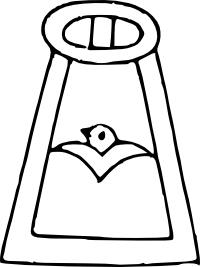Recreational research into Feudal Japan
Posts tagged plover
Primary Source: Kenmon Shokamon
Jun 5th (a Shakkō (赤口))
O-umajirushi is great for an idea of what mon were like in the Momoyama period, but what were they like before that? There are few earlier sources for mon other than depictions of battle scenes and similar. One that I have found, however, is Kenmon Shokamon (見聞諸家紋), which translates to “Various Observed Family Crests”. It’ss an excellent collection of a wide variety of earlier mon, some of which have been featured on this blog as “provincial samurai” mon. It was originally published around 1467–1470, and it features crests that were observed on the banners and camp curtains of the Ōnin War, which started the Sengoku period.(ja.wp:見聞諸家紋) It contains a variety of combinations and motifs that are rare or absent by the time of the later codifications. I recently got access to the full text of this source via Google Books and shenanigans, and it has plenty of interesting designs, featuring a wide selection of plovers and also including a phoenix, a horse, and a shrimp. It also features some unexpectedly pictorial designs that in some ways are more similar to the later Edo period designs than those in common use around the Momoyama period. Its selection of mon that combine multiple elements in different ways will be useful for those seeking to register mon in the SCA.
I haven’t had time for detailed analysis as of yet, but I present the text for your enjoyment:
Mon of the Week: Enclosed Goose
Oct 25th (a Tomobiki (友引))
At the other end of the spectrum in terms of realism from the Perching Hawk is this mon below, from the same collection of provincial samurai mon.(KJ:7) The highly stylized bird in the middle is a wild goose, and this depiction of geese is still common through the present day. Geese are associated with good news and gracefulness.(NHK Online) More mysterious is the enclosure around the goose. It bears some similarity to a piece of horse equipment (aori/泥障) that would hang from the saddle and sit between the rider’s legs and the horse’s body; these could be decorated with mon the way the plover image appears here. This explanation isn’t entirely convincing, so there could be other possibilities.
Note: This entry originally inaccurately identified the bird as a plover instead of a wild goose. Plovers were a common motif in Japanese poetry, with connotations of longevity based on their cry “chiyo” (thousands of generations).(Komuso)
In addition, one source identifies this enclosure as tongs.

